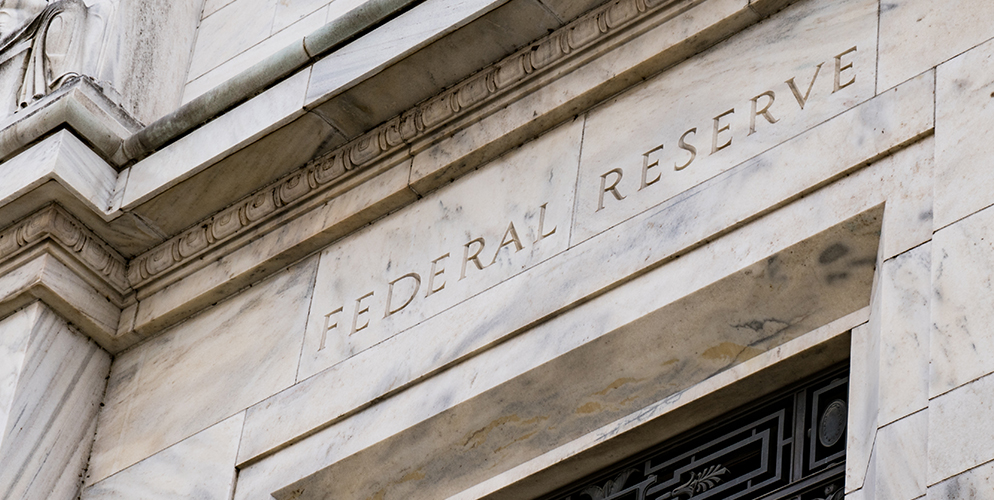Ahead of the last FOMC, which brought a 25 basis point rate hike, the debate over whether current policy has attained sufficiently restrictive ground intensified with contracts signaling enough is enough for the June and beyond sessions. Before, during, and after the early-May FOMC, contracts were telegraphing a return to actual rate cuts occurring through much of the second half of 2023. Although Chair Powell and team have yet to subscribe to a pivot, the door was pushed wide open to allow for a very realistic pause, after acknowledging that tighter policy may be at or near its cyclical conclusion (aka sufficiently restrictive). Without necessarily forceful rhetoric on decision day, the door leading to another rate hike was also left open. This has become pronounced in recent days given more direct statements from certain policymakers. We believe that current economic, financial, and geo-political conditions lend credible support to a pause, but we are still not on board with a pivot to rate cuts during the balance of 2023. Having said this, an unforeseen economic event that drives growth deep into negative territory could bring about a change of heart to our base case. We view future regional bank failures as more idiosyncratic than systemic, yet consumer sentiment and spending patterns could evolve towards a more negative bias should further casualties be added to the list. Lending standards are likely to tighten further with the other side of the supply/demand dynamic revealing fresh evidence of abating loan demand. We also need to pay attention to small businesses and their access to borrowing capacity, and to overall corporate viability within the financial markets. Here, our concerns revolve around the performance trajectory of local host jurisdictions and their ability to withstand the effects of specific corporate stress or even an area bankruptcy.
Taking account of the inflation prints for April, both CPI and PPI exhibited moderating upward price pressure, and while not the most convincing, provides the Fed with sufficient cover to pause next month. Going forward, we will be looking for signs of any consistent revival of goods inflation that would illustrate the uneven pathway towards disinflation and perhaps support the argument for further policy tightening. Without much slower month/month core CPI readings, arriving at the Fed’s 2% target in its desired time horizon will be evasive at best and near impossible at worst, but we do expect inflation to retreat further over the near-term as supply pressure softens with a retrenchment in overall demand. While the April employment report certainly characterizes a resilient labor market sector, pushing wages higher, the most recent read on unemployment insurance claims shows that applications increased to the highest level since October 2021 (264,000), piercing through the thick employment armor. While we continue to believe that a debt ceiling deal will be reached, albeit at the 11th hour, without default on our obligations, a looming “X-date” as early as June 1 has only exacerbated market anxiety and elevated debate over “what-if” scenarios. With two weeks of May down on the books, UST yields have been volatile, but have largely been keeping to a trading range. Ahead of publication, month-to-date Treasury security performance was modestly positive, yet year-to-date the asset class was earning 3.87%, largely on repricing for expectations of Fed rate cuts. During the first week of May, a flight-to-quality bid was prevalent given concerns surrounding the potential for additional banking stress, along with post-FOMC expectations that the benchmark funds rate will be cut this year. This bull-steepening event widened the gap between the 5 (declining to its lowest level since last August) and 30-year Treasury yields to levels previously seen early last year, and further steepening activity will likely be tied to the market pricing depth of expected rate cuts, with the belly of the Treasury curve poised to outperform. Ultra-short 1-3-month Treasury bill yields were driven higher as fears of an unresolved debt ceiling intensified, on top of expanding recessionary concerns, forming a more pronounced short Treasury curve inversion.

Although funds have seen 13 consecutive weeks of outflows, we are nearing the end of the cycle and we should begin to see, at the very least, intermittent inflows given the approaching conclusion to the Fed’s tightening sequence, a pronounced net-negative supply backdrop, and the need to position muni portfolios more defensively ahead of economic contraction
Despite the presence of multiple market concerns, munis are holding up well, and as reinvestment demand picks up through the next few months, technicals, underscored by tempered new-issue supply (which is down about 20% year-over-year YTD), should continue to offer opportunities. Bloomberg currently shows a net negative supply of $13.97 billion over the next 30-day period, with our expectations of an even deeper supply deficit beyond the next month as heavier calls and maturities arrive and new-issue product remains relatively thin. While the muni market displayed relative calm ahead of fresh inflation data, debt ceiling proceedings and extended banking stress could ignite near-term rate volatility. While there is a very low probability of a debt limit crisis occurring, certain municipal credit structures having reliance on varied types of Federal funding would be most at risk for a temporary disruption, such as hospital bonds having Medicare/Medicaid reimbursements as part of the payer mix, Section 8 public housing, and Garvee bonds (Grant Anticipation Revenue Vehicles). Now is the time to review portfolios for any observable weakness, trade up in credit quality where appropriate, and engage opportunistically. As the recession narrative continues to out-run the inflation backdrop, investors should think defensively ahead of the next recessionary cycle. Admittedly, credit quality has peaked, but we do expect ratings upgrades to outpace downgrades throughout the foreseeable future.
At this time, we do not see a material shift in new-issue supply. While issuer hesitation over the debt-ceiling debate will come to a natural conclusion sooner rather than later, currently elevated levels of muni yields should continue to suppress refunding and new-money transactions. Although issuers may also choose to stay on the sidelines ahead of potentially lower rates, the waiting period may be longer than expected. Persistently rich ratios, particularly on the shorter end of the yield curve, have contributed to retail resistance, yet despite thinner market engagement, business is getting done in certain spots. Migration out along the Muni curve is being observed so as to pick up better value opportunities given the richness on the muni short-end relative to Treasuries. Similar to UST, the belly of the Muni curve has seen heavier institutional engagement, thus offering enhanced performance potential as spreads have moved wider beyond shorter tenors. Expectations for recession and rate cuts add to this movement. Although funds have seen 13 consecutive weeks of outflows, we are nearing the end of the cycle and we should begin to see, at the very least, intermittent inflows given the approaching conclusion to the Fed’s tightening sequence, a pronounced net-negative supply backdrop, and the need to position muni portfolios more defensively ahead of economic contraction. Muni credit is in a strong position to weather the impact of a mild to moderate recession having the benefit of wide-ranging Federal stimulus funds, strong tax collections, and record levels of reserve/rainy day funds. However, more recent tax receipts have been performing below Treasury expectations, contributing to the debt ceiling stress, but it is important to note that local jurisdictions typically rely upon property tax revenue, which is still showing favorable collection activity. Despite the fall-off in certain state tax collections and building expenditure pressures, states are able to tap, if necessary, generous reserve fund/rainy day balances, which stood at record levels in 37 states at FY-end 2022 per The Pew Charitable Trusts. These balances could be used as an offset to revenue dislocations and/or budgetary imbalances.

Jeff Lipton
Title:Managing Director, Head of Municipal Credit and Market Strategy
85 Broad Street
26th Floor
New York, New York 10004

